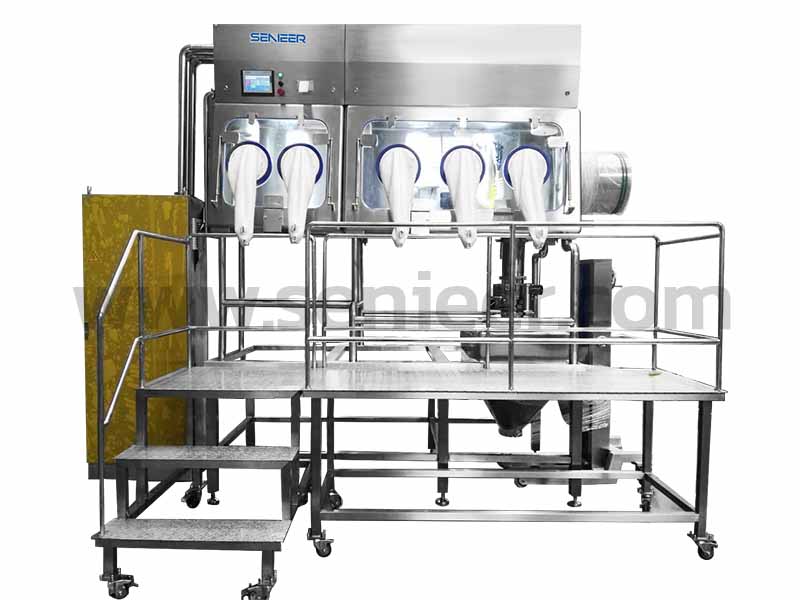After more than 30 years of development, Single-use Technology (SUT) has covered all operating units of the entire biopharmaceutical process, from upstream cell culture to downstream purification to final filling.
Compared with the traditional stainless steel system that is repeatedly used, the single-use system has the advantages of flexible operation, high safety, shortened production cycle and reduced initial investment cost, which can meet the regulatory requirements of pharmaceutical companies to reduce the risk of cross-contamination and reduce cleaning verification to the greatest extent. ever-increasing demands.
The preparation filling process includes semi-finished product preparation, terminal sterilization filtration, aseptic transmission and aseptic filling distribution. The single-use filling system is a pre-validated, pre-installed and pre-sterilized aseptic transfer unit, including a single-use liquid dosing bag, a liquid storage bag, a high buffer bag, a disposable capsule filter, a filling line, a disposable Aseptic connectors, disconnectors and disposable filling needles and other components.
Part 1 Terminal Sterilization Filtration
“GMP” appendix sterilization filtration technology and application guide stipulates: The release of sterile gas or liquid should be considered when designing the filter position, and should be confirmed according to the product batch, pipeline length, installation and sterilization convenience, etc. The area and location where the filter will be installed.
Immediately after use, filters must be tested for integrity by appropriate means and documented. Before using a sterilizing filter, a risk assessment should be conducted to determine whether integrity testing should be performed, and whether to perform it before or after sterilization.

If a single-use filtration system is used and pre-use integrity testing or flushing is required, the following additional factors should be considered in the design: the pressure resistance of the upstream connecting pipeline, the sterility of the downstream, and the availability of sufficient space downstream (such as Install a sterilizing grade barrier filter or a sterile bag of corresponding volume) for exhaust and drainage.
Part 2 Aseptic Filling Background Environment
The aseptic filling production of biological preparations must be carried out in a Class100 (ISO5, Class A) environment. According to different background environments, the local environment where the filling machine is located can usually be divided into laminar air flow (Laminar Airflow), restricted access Barrier system RABS (Restricted Access Barrier System, Open or closed) and isolator Isolator.
ORABS is an open restricted access barrier system, which is currently the most commonly used filling barrier. It is equipped with a glass door metal frame and intervention gloves. The top is equipped with a static pressure box to provide one-way vertical airflow. The top air is exhausted from the bottom and returned through the B-level background.
With the maturing of Isolator technology and the strengthening of risk awareness of production personnel, isolators are widely used. The background environment is Class C or D clean area. All personnel operations and materials/tools in the production process Neither transmission can destroy the airtightness of the system. The isolator needs to be automatically decontaminated with VHP before use, and the repeatability and controllability need to be verified.
Part3 Sterile Transfer System
The aseptic transmission system runs through the entire aseptic filling production process, and the wall-to-wall and cross-level transfer system is a common tool. Compared with the traditional method that involves a lot of cleaning, sterilization and other steps, the use of a one-time cross-level wall penetration system can solve this problem more safely and conveniently. Leclean Pass provides a simple, safe and reliable solution for the transfer and delivery of a large number of fluids in different functional rooms. The entire system realizes the aseptic transmission of multi-pipeline fluid through a stainless steel channel and pre-sterilized disposable components, meeting various process requirements: 1, the same level of penetration through the wall 2, cross-level penetration of the wall 3, high activity and low activity transmission ( ADC, etc.) 4. Toxic and non-toxic transmission (virus vaccines, etc.).
How to quickly transfer items (liquid medicine, aluminum-plastic caps, rubber plugs and tools, etc.) to or from a controlled environment in the isolator, RTP (Rapid Transfer Port, fast transfer interface) is a Ideal choice. The RTP system consists of two parts: α port and β port. The α port is installed on the isolator door and is in a normally closed and sealed state; while the β end part used to transfer items includes a flange, seal and door, and is divided into three types: stainless steel transfer bucket, plastic transfer bucket and disposable transfer bag Types of. After the β-end part is connected to the α-port, the operator opens the RTP door from the inside of the isolator with gloves, and then transfers the pre-sterilized material to the inside of the isolator. The whole process ensures isolation from the outside world.
Part 4 Aseptic Filling Bag
Disposable aseptic filling bags include components such as high-position buffer bags, filling tubing, and filling needles. The high-level buffer bag is a temporary storage bag for liquid medicine during the filling process. The load cell on the hanging scale feeds back the start and stop of the peristaltic pump to realize continuous liquid replenishment, maintain a stable liquid level and liquid inlet pressure, and finally ensure good filling precision.
The filling pipeline includes the pump inlet pipe, the pump pipe and the pump outlet pipe. The pump pipe specifically refers to a part of the hose squeezed in the filling pump (that is, the peristaltic pump), which is an important factor in determining the filling accuracy. . Each filling pump usually has two rollers, each roller is composed of 4-8 rollers, each pump tube passes through a roller to form a channel, and the last two hoses converge into a channel, through The peaks and valleys of the two channels are superimposed to cancel out the pulses. The liquid outlet method of the filling bag is also a factor that affects the instability of the filling accuracy. The commonly used boat type and octopus type can satisfy the uniform liquid separation. In addition, the inverted trapezoidal bag design can minimize the waste of liquid medicine.










